Your cart is currently empty!
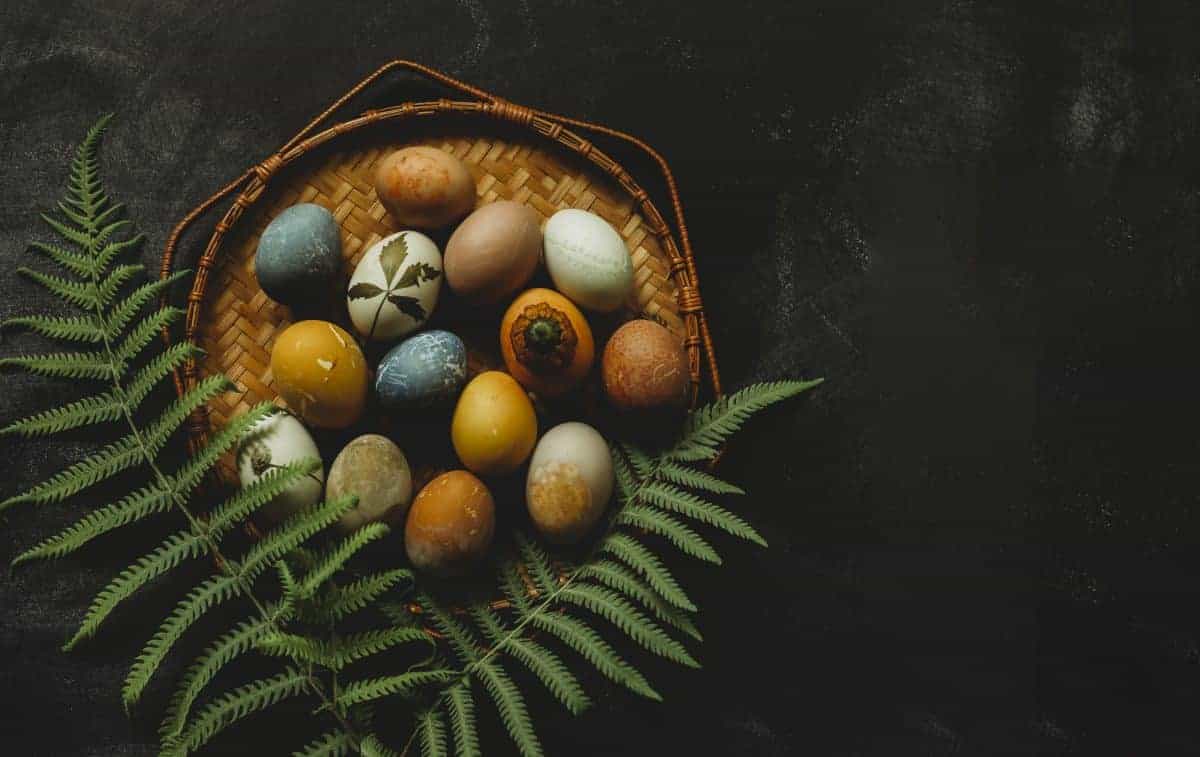
How To Make Natural Dye For Easter Eggs
Spring brings with it blooming flowers, rain showers, and Easter eggs! If you’re like us, you’re probably stuck at home right now looking for things to do with the kids (here’s a huge list if you need more ideas for outdoor spring activities for kids). Dying eggs with natural ingredients one of those activities (#88)! It’s also a super fun social distancing activity for the whole family. Today, Texas photographer and mom of two (with another on the way), Tiffany going to walk you through how to make natural dye for Easter eggs, using household, backyard and pantry items that you already have at home like spices, fruits, veggies, and foraged plants! Get ready for the fun!

Up your Easter fun without leaving the house
While lots of egg dying tutorials will use super colorful dyes made from fancy ingredients, we’re going to make this simple and easy for you. We want to show you how to use household items from your fridge, pantry, and backyard to make dyes. No need to put yourself at risk by going to the grocery store. And no need to purchase expensive store-bought Easter egg dyes. There are lots of items you can use to make all sorts of colored dyes right around your home. Your kids will be so surprised and impressed that dyes can be made from so many ordinary things! And this will surely elevate your Easter egg hunt to the next level.
Gather your household materials
Start by having the kids collect items that can be used to make dyes. For this tutorial, we used blueberries, beets, the tops of carrots, wildflowers, and turmeric. So many things you have on hand WILL work! Have some fun by searching your yard, pantry, and your fridge! Have some fruits or veggies going bad?! Perfect!
Some other ideas for items to use to make natural dye are: purple or red onions, dandelions, raspberries, spinach, paprika, kale, green onions, chili pepper, red cabbage, red peppers, or yellow onion skins! The options are endless, and super fun to experiment with!
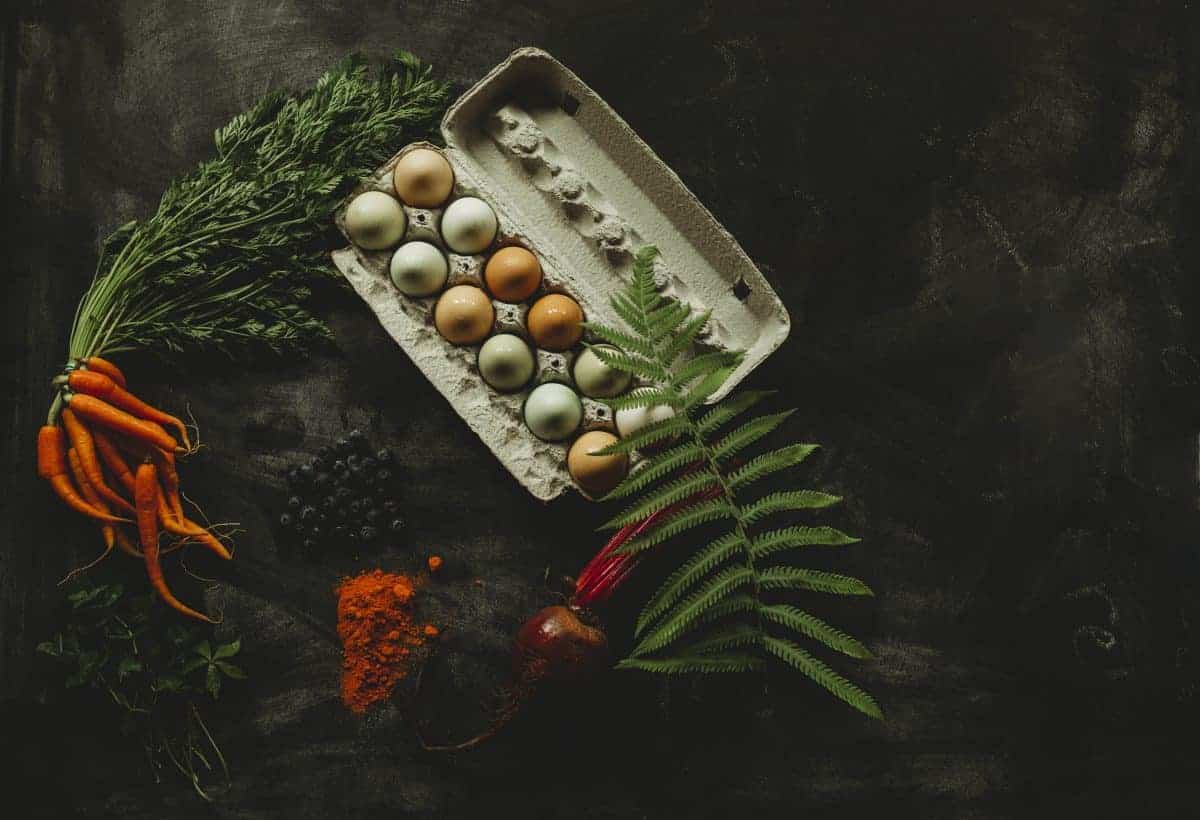
Supplies for naturally dyed eggs
- hardboiled eggs cooled to room temperature (note: brown and assorted color eggs will dye differently)
- fruit, veggies, spices, foraged plants and flowers from the backyard
- water
- white vinegar
- glass Mason jars
- sheer pantyhose
- rubber bands
- scissors
- wildflowers/foliage for decorating eggs
- strainer (cheesecloth or a paper towel also work!)
How to make natural dye for Easter eggs
Put 6 cups of water in a large saucepan and bring to a boil. Add 2-4 cups of whatever natural substance/ingredient you are trying to pull color from to the boiling water. Make sure your ingredients are chopped up, which helps with the color extraction process. Add 3 tablespoons of white vinegar. Let the mixture boil for about 10 minutes, then turn the heat down and simmer for 20 more minutes. Remove from heat and strain the liquid into a mason jar(s). Repeat the process for each additional dyes and colors.
Naturally dying eggs
Place hardboiled eggs into each dye and let them sit. We HIGHLY recommend you soak the eggs at least 24 hours! The longer you leave them in, the more pigmented your eggs will be! After eggs are desired color, remove from dye and place on a towel or paper towel until dry. Please note these dyes WILL stain fabrics, so be extra careful.
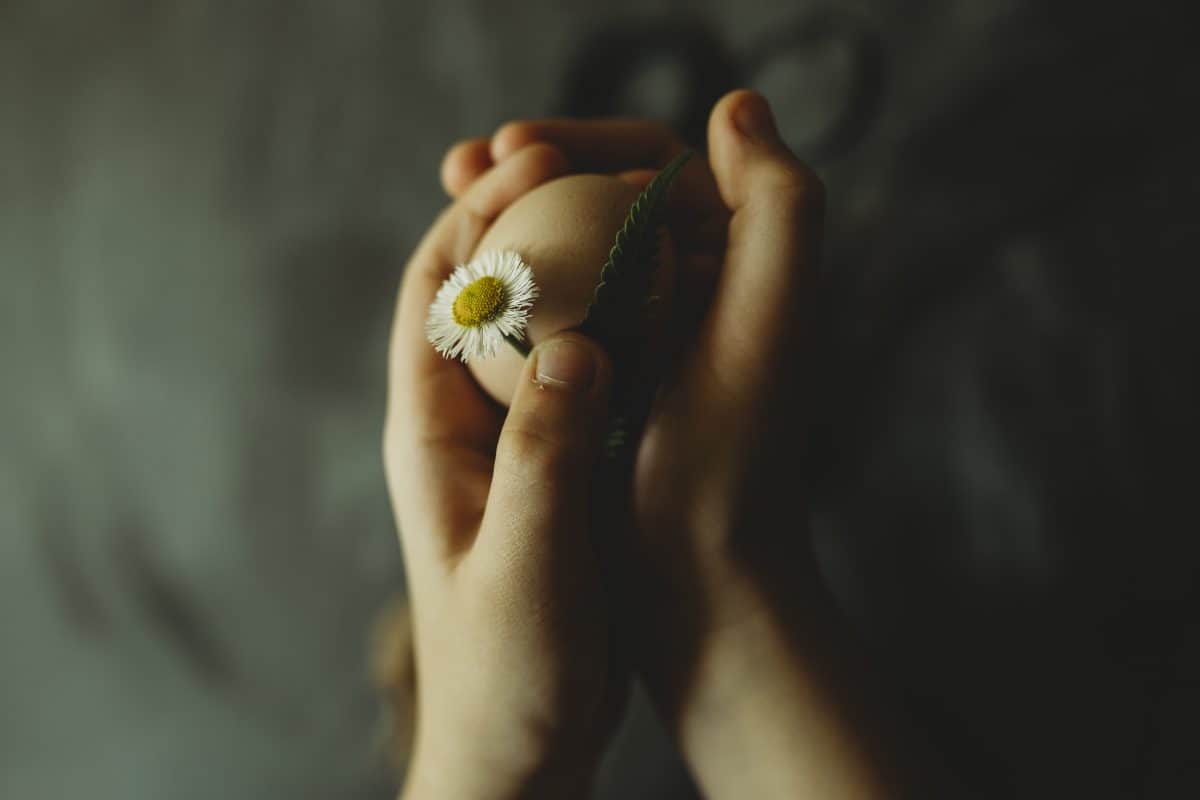
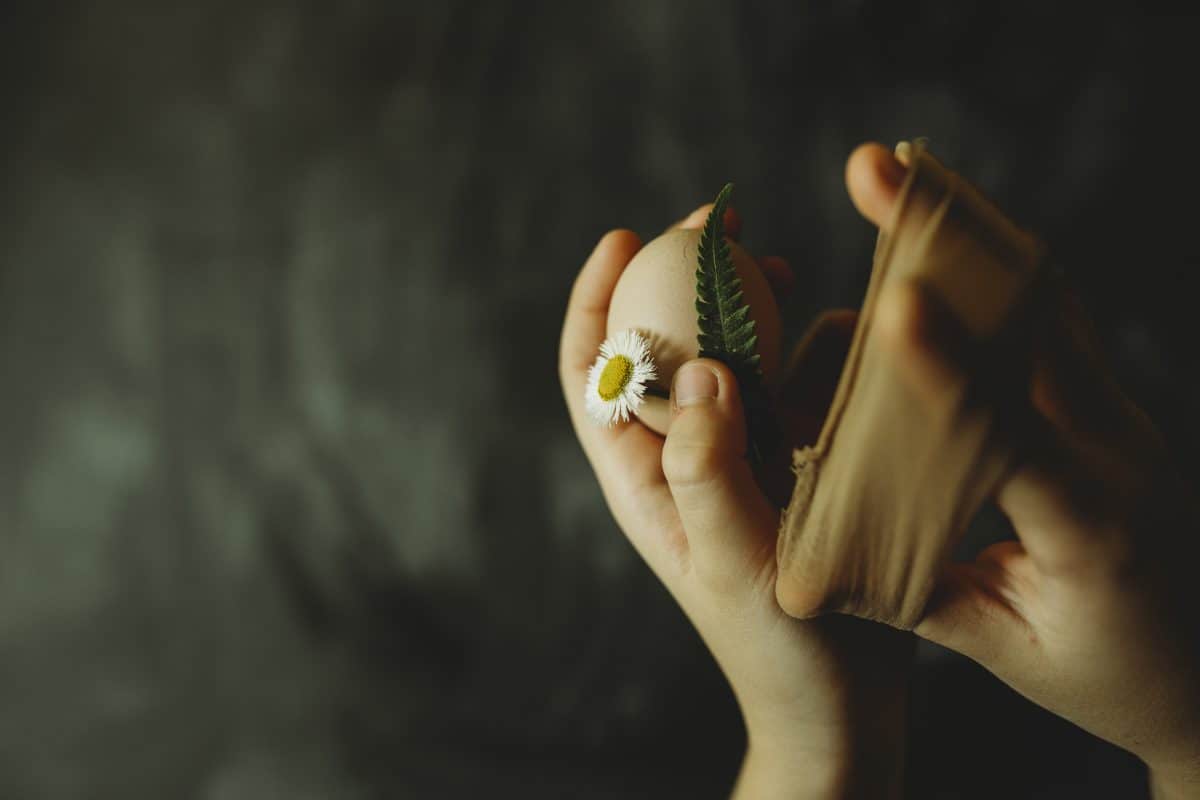
Adding flowers and prints
We love to make our naturally dyed eggs a little extra fancy with flower and leave prints and added dried wildflowers. To do this, start by cutting pantyhose into 5-6 inch strips. Lay the small plants/flowers of your choosing across the egg. Carefully place pantyhose around the egg pulling them as tight as possible from the opposite side and secure with a rubber band. Repeat as desired. Place the eggs in the jars with the dye for at least 24 hours (as recommended above). Remove the eggs and let dry. Use scissors to cut pantyhose off off eggs at the base of rubber band and carefully remove the pantyhose. This is the fun part! You can leave the flowers/greenery pressed on or remove them for a print!
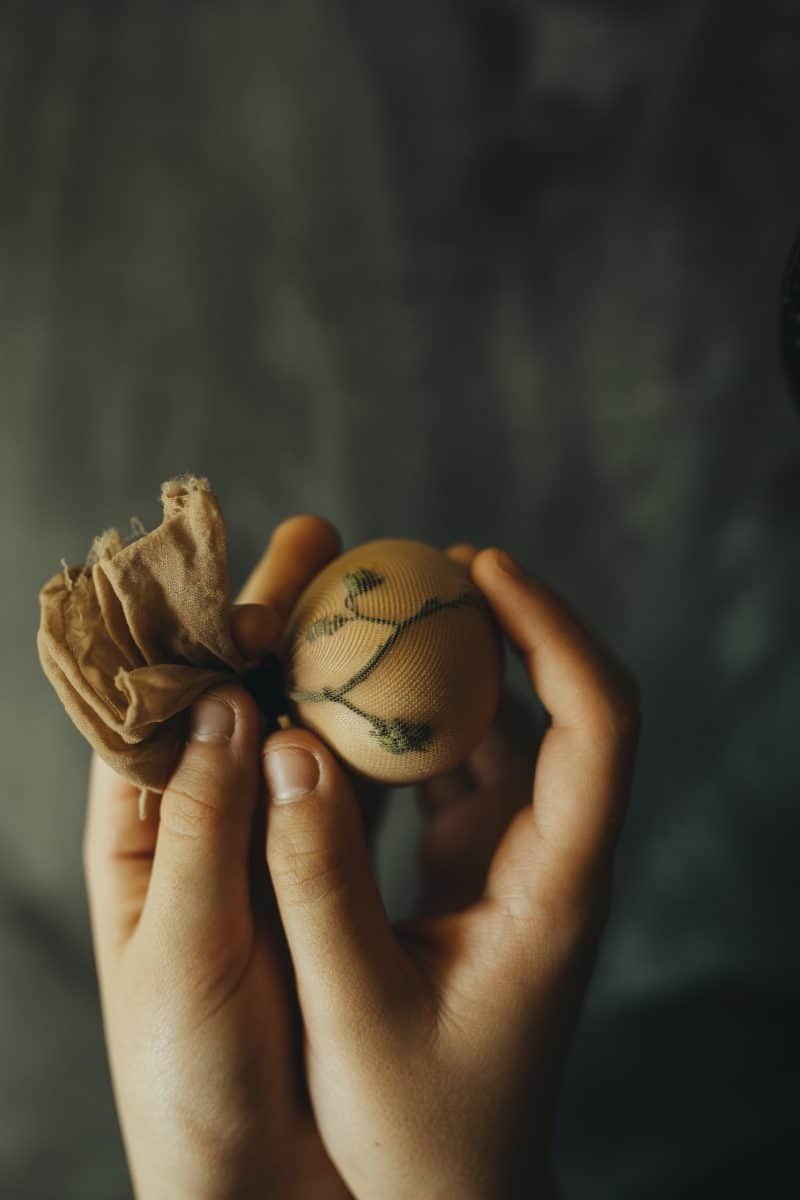

Natural dye for Easter eggs
And that’s it! Making natural dye for Easter eggs is easy as can be. We hope you’ll give this fun technique naturally dying eggs using household items and foraged materials a try. Make sure to tag us in your images if you post them online and we’ll be sure to share! We can’t wait to see how your eggs turn out and all your creative dyes. Stay safe out there.

Have you ever made natural dye for Easter eggs?
About the author
Tiffany is a homeschooling Mama of three earthside children (one baby boy on the way) and one baby girl that travels among the stars. She is a vintage obsessed, wicker collecting, tree-loving photographer, creator, painter, writer and loves to document her children’s childhood and is passionate about sharing her take on motherhood, raising children outside of the “norm” and in nature. You can find Tiffany on Instagram at @dear.wildlings.

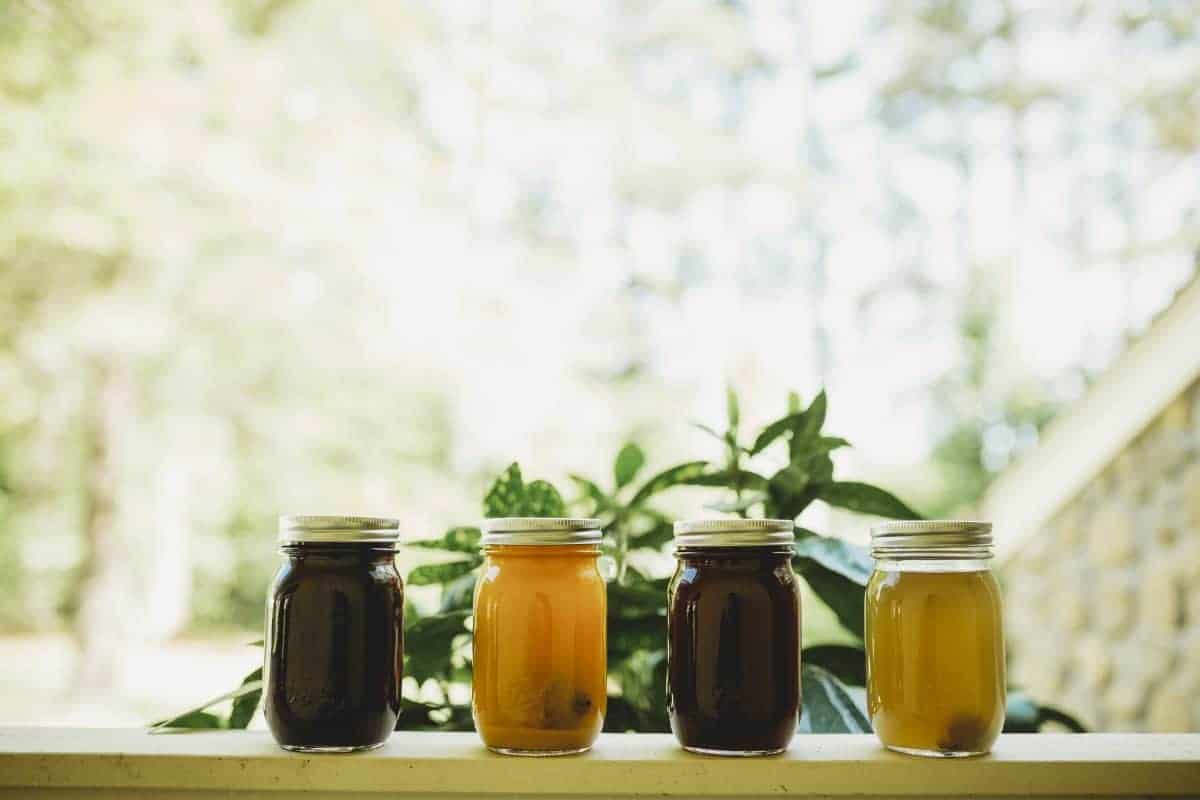
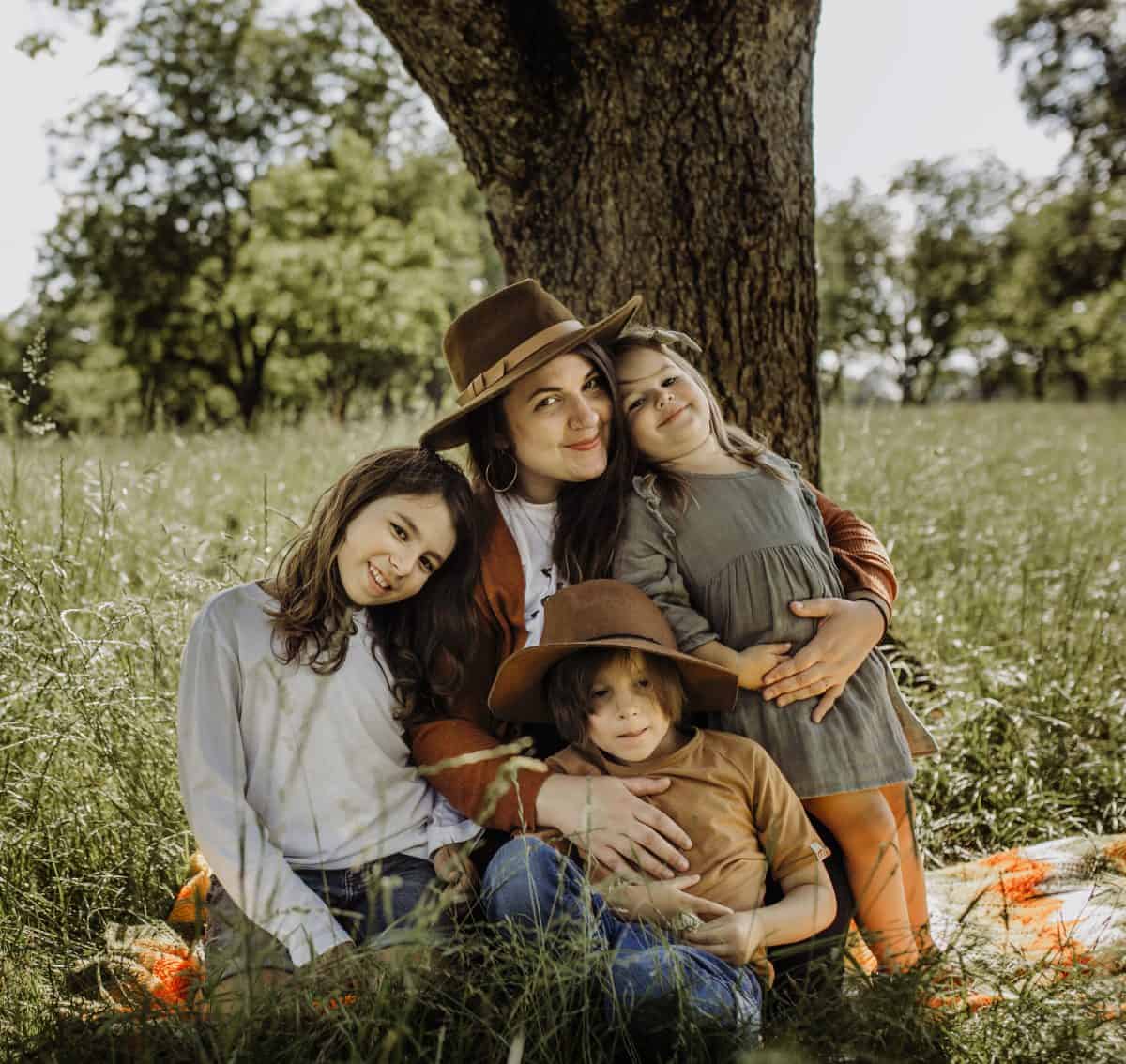
Leave a Reply